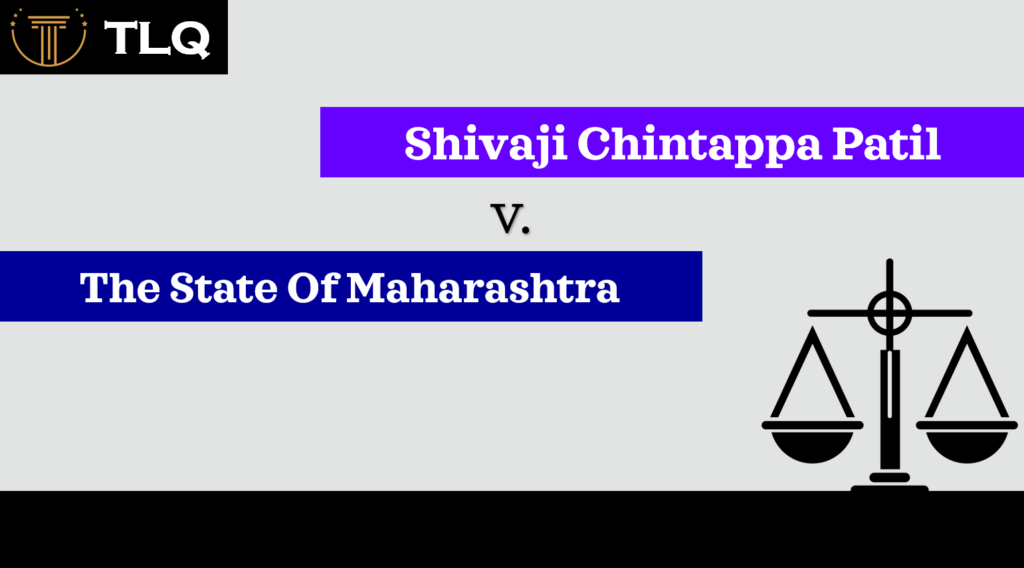Published on: 01st October 2025
Authored By: Vaishali Nikhil Varma
New Law College, Pune
Abstract
The enactment of the Bharatiya Nagarik Suraksha Sanhita (BNSS), 2023—alongside the Bharatiya Nyaya Sanhita (BNS) and the Bharatiya Sakshya Adhiniyam (BSA)—represents a landmark reform of India’s criminal justice system, replacing the colonial-era legal framework with a more contemporary and indigenous model. This paper undertakes a legal analysis of the BNSS, which supersedes the Code of Criminal Procedure (CrPC), with the stated objectives of decolonising legal terminology, integrating digital processes, expediting the administration of justice, and reinforcing both victim rights and prosecutorial accountability.
Among its notable features are the introduction of electronic FIRs, virtual court proceedings, mandatory audiovisual documentation of procedural steps, and stringent timelines for investigation and adjudication. The legislation also institutionalises structured victim compensation, community service as an alternative to incarceration, and mandates the establishment of witness protection schemes. Furthermore, it empowers district-level Directorates of Prosecution to enhance oversight and ensure procedural efficiency.
Despite these progressive strides, the BNSS has sparked significant debate. Critics have raised concerns over the expansion of police powers, tightened bail provisions, and the potential for misuse of pre-trial asset attachment mechanisms. The increased authority vested in the state, if unchecked, may encroach upon fundamental civil liberties. Additionally, while the digital transformation of criminal procedure is commendable, it risks excluding digitally marginalised populations and raises unresolved questions about data privacy and access equity.
Preliminary implementation reports from states such as Uttar Pradesh, Chandigarh, and Delhi indicate improvements in conviction rates and procedural efficiency. However, legal scholars and civil society actors have cautioned against the limited public consultation preceding the enactment and the potential for overreach in law enforcement practices.
In conclusion, while the BNSS signifies a pivotal step toward modernising India’s criminal procedure, its long-term success will depend on transparent implementation, inclusive digital infrastructure, vigilant judicial oversight, and a careful balancing of state authority with the protection of individual rights.
1. Introduction
India’s criminal justice system has long been governed by colonial-era statutes that, despite amendments, have struggled to keep pace with the evolving needs of a democratic society. On 1 July 2024, a significant transformation occurred with the enactment of three new laws:
- Bharatiya Nyaya Sanhita (BNS): substantive criminal law (replacing the Indian Penal Code);
- Bharatiya Nagarik Suraksha Sanhita (BNSS): criminal procedure (replacing the Code of Criminal Procedure);
- Bharatiya Sakshya Adhiniyam (BSA): rules of evidence (replacing the Indian Evidence Act).
This paper focuses on the BNSS, which aims to modernise procedural law through digitisation, decentralisation, and enhanced prosecutorial mechanisms. While these reforms are commendable, they also raise critical questions about the balance between state authority and individual liberties.
2. Genesis and Intent
The BNSS was introduced on 12 December 2023 and received Presidential assent on 25 December 2023, coming into effect in mid-2024. Its stated goals include decolonisation of legal terminology, technological integration, expeditious justice delivery, victim empowerment, and strengthening of prosecutorial mechanisms.
2.1 Decolonisation and Terminology
The BNSS replaces outdated terms such as “lunatic” and “unsound mind” with more respectful language (“intellectual disability” and “mental illness”). This aligns with the Mental Healthcare Act, 2017 and reflects broader social reforms aimed at dignifying vulnerable populations within the legal framework.
2.2 Key Objectives
The BNSS pursues several transformative objectives:
Digitisation: Introduction of e-FIRs, e-summons, audiovisual recording of trials and searches, and virtual hearings to modernise court procedures and improve accessibility.
Time-bound processes: Establishment of investigation deadlines (90 days for offences punishable with imprisonment under seven years; 180 days for serious crimes), mandatory timelines for charge framing, judgment delivery, and daily trial proceedings.
Victim-centric measures: Provisions ensuring victims receive FIR access, periodic updates on case progress, and structured compensation schemes.
Witness protection: Mandatory witness protection schemes in each state, with gender-sensitive protocols for statement recording.
Community sentencing: Introduction of fines and community service as alternatives to incarceration, aimed at decongesting prisons and promoting restorative justice.
Directorate of Prosecution: Establishment of district-level prosecutorial oversight bodies to monitor progress, decide on appeals, and ensure timely filings.
3. Technological Integration
3.1 E-Procedures
The BNSS introduces comprehensive provisions for electronic FIRs, e-summons, video-conferencing in courts, and digitally-stored evidence. Audiovisual recording is mandatory for searches, seizures, forensic evidence collection, and witness statements. These measures aim to create transparent, tamper-proof records while facilitating remote participation in legal proceedings.
However, concerns have been raised about the digital divide. Complete digitisation may exclude persons without internet access and raise privacy concerns, particularly regarding the confidentiality of complainants and sensitive case information. Such issues require careful impact assessment and inclusive policy design.
3.2 Impact on States
Several states have already begun leveraging the BNSS framework with notable results:
Uttar Pradesh: The state’s “Operation Conviction” initiative strategically utilises video testimony and digital documentation under the BNSS framework to minimise court appearances and expedite trials of heinous crimes.
Chandigarh: The Chandigarh Police report a 91% conviction rate in cases filed under BNSS, with average trial duration dropping dramatically from 300 to 110 days. This success is supported by the e-Sakshya platform for multimedia evidence storage, 36 video-conference studios, and extensive personnel training.
Delhi: The Lieutenant Governor has linked police stations with hospitals for medico-legal support under Section 194(3) of the BNSS, replacing cumbersome procedures and improving efficiency in handling medico-legal cases.
4. Procedural Reforms: Timelines and Accountability
4.1 Specific Time Limits
The BNSS enforces strict deadlines at various stages of criminal proceedings:
-
Investigation: 90 days for offences punishable with imprisonment under seven years; 180 days for serious crimes
-
Charge framing: Within 60 days of the first hearing
-
Judgments: Within 30 days post-arguments (with a possible 45-day extension)
-
Commitment proceedings: Within 90 days (with a possible 90-day extension)
-
Trial proceedings: Daily trials mandated to prevent unnecessary delays
4.2 Policing Accountability
The BNSS requires police to update victims and informants every 90 days on the status of investigations. While police retain the power to compel attendance, protective exemptions apply for vulnerable groups including minors, elderly persons, women, and persons with disabilities.
4.3 Protection and Compensation
The legislation mandates several victim-centric protections:
-
Witness protection schemes are mandatory in each state
-
Victims are entitled to free access to FIRs, medical reports within 7 days, and case documents within 14 days
-
Courts are empowered to award compensation and endorse structured compensation schemes
-
Gender-sensitive protocols ensure dignified treatment of victims throughout legal proceedings
5. Prosecutorial Oversight and Alternatives to Incarceration
5.1 Directorate of Prosecution
Sections 20-21 of the BNSS establish district-level Directorates of Prosecution responsible for oversight, progress monitoring, appeal decisions, and ensuring timely filings. The Home Minister has directed the implementation of e-summons and strengthened prosecutorial capacities, targeting charge-sheet completion within 60-90 days and a 20% improvement in conviction rates for heinous crimes.
5.2 Expanded Sentencing Options
The BNSS introduces several reforms in sentencing:
-
Increased fine limits for magistrates (first-class magistrates: ₹50,000; second-class magistrates: ₹10,000)
-
Introduction of community service as a non-custodial remedy
-
Updated detention-release mechanism: no automatic release after serving half the maximum sentence in cases involving multiple offences or life/death sentences
6. Expansion of State Power: Criticism and Risks
6.1 Bail and Custody Restrictions
Contrary to CrPC norms, the BNSS excludes certain categories of offences from bail and early release eligibility, including cases involving multiple offences or life/death sentences. Police custody can now be extended up to 15 days intermittently within judicial custody periods, potentially denying release opportunities to accused persons.
6.2 Increased Police Powers
The BNSS grants police enhanced powers to compel production of digital devices, seize or attach property pre-trial, and mandate preliminary inquiry prior to FIR registration. The latter provision appears to contradict the Supreme Court’s judgment in Lalita Kumari v. Government of Uttar Pradesh, which established mandatory FIR registration for cognizable offences. While searches now require audiovisual recording, the broad discretionary powers vested in police raise concerns about potential misuse.
6.3 Exemptions for Vulnerable Persons
To balance enhanced police powers, the BNSS introduces protective exemptions for minors, women, elderly persons, and persons with disabilities regarding police summons. These provisions reflect a more humane approach to criminal procedure while acknowledging the vulnerabilities of specific population groups.
6.4 Digital Divide and Privacy Concerns
The comprehensive digitisation mandate may inadvertently exclude populations with limited internet access or digital literacy. Additionally, the collection, storage, and use of digital evidence raise unresolved questions about data privacy, cybersecurity, and the potential for surveillance overreach. Stakeholders have called for nuanced implementation with thorough impact assessments, particularly concerning the privacy rights of complainants and accused persons.
7. Implementation Across India
7.1 State-Level Adoption
Early implementation reports demonstrate varied results across states:
Uttar Pradesh: The state reports 458 fast-tracked heinous crime cases, resulting in 4 death sentences and 425 sentences under 20 years. Digital processes have generated savings of approximately ₹25 crore.
Chandigarh: Achieved a 91% conviction rate with trials concluding in an average of 110 days. The police registered 3,154 FIRs under the new framework, supported by 36 video-conference studios, the e-Sakshya evidence platform, and extensive training programmes for personnel.
Delhi: The Lieutenant Governor approved linking police stations with hospitals for medico-legal support under Section 194(3) of the BNSS, streamlining previously cumbersome procedures.
General rollout: Training programmes conducted by institutions such as RMLNLU and ICPS in Uttar Pradesh are informing officials about the new laws. Infrastructure development, inter-agency coordination, and prosecutorial appointments are being monitored through ministerial reviews.
8. Broader Context and Comparative Analysis
8.1 BNS and BSA Reforms
The BNSS operates within a tripartite reform framework:
Bharatiya Nyaya Sanhita (BNS): Introduces gender-neutral definitions for sexual offences, defines organised crime, and criminalises mob lynching. The BNS also replaces the controversial sedition law with treason provisions.
Bharatiya Sakshya Adhiniyam (BSA): Allows digital evidence, oral evidence through electronic means, and expands definitions of secondary and electronic evidence.
These complementary reforms bolster the BNSS’s digitisation and victim-centric objectives, creating a cohesive modernised criminal justice framework.
8.2 Critical Voices
Despite its progressive elements, the BNSS has faced significant criticism:
Rapid implementation: The reform process has been characterised as abrupt, with limited public consultation and stakeholder engagement.
Overbroad police authority: Expanded arrest and detention powers risk eroding fundamental rights and enabling potential misuse.
Pre-trial asset attachment: The provision for attaching property before trial may be deployed oppressively, particularly against vulnerable or politically targeted individuals.
Digital divide and privacy: Vulnerable groups may be systematically excluded from justice due to lack of digital access, while data collection raises surveillance concerns.
Overlapping offences: Integration of BNSS provisions with existing special laws may create confusion and jurisdictional conflicts.
Community service vagueness: The structure, implementation, and monitoring of community service alternatives remain unclear, raising questions about their practical effectiveness.
9. Conclusion: Balancing Reform and Rights
The BNSS marks an unprecedented transformation in India’s criminal procedure, representing both an opportunity and a challenge for the nation’s justice system.
Achievements:
- Commendable modernisation through digitisation, time-bound processes, and victim empowerment
- Structural enhancements via prosecutorial directorates, gender- and disability-sensitive procedures, and community sentencing options
- Early empirical evidence from states like Uttar Pradesh and Chandigarh showing promising gains in conviction rates and procedural efficiency
Concerns:
- Risk-laden expansions in police authority, restrictions on bail, and pre-trial asset attachment mechanisms
- Growing apprehensions around digital exclusion, privacy violations, and rapid rollout without thorough consultation
- Potential for misuse of enhanced state powers absent robust oversight mechanisms
Sustaining the positive outcomes requires:
- Robust oversight: Ensuring accountability and transparency in the exercise of enhanced police powers
- Inclusive deployment: Guaranteeing digital access and literacy support for marginalised populations
- Further legal refinement: Addressing ambiguities regarding police powers, bail rules, and community service implementation
- Judicial monitoring: Vigilant protection of constitutional rights within the new procedural framework
The BNSS sits at a critical inflection point—offering the promise of a more efficient, responsive, and equitable criminal justice system while presenting challenges to constitutional safeguards. Its ultimate success will depend on how effectively reform is balanced with protection of civil liberties and executed in a truly inclusive, accountable manner. The coming years will prove decisive in determining whether this ambitious reform fulfills its transformative potential or becomes another chapter in the long history of well-intentioned but inadequately implemented legal reforms in India.



